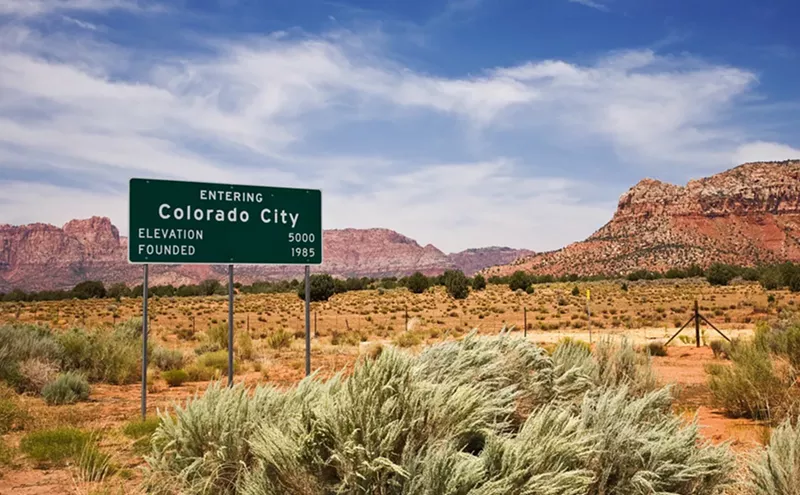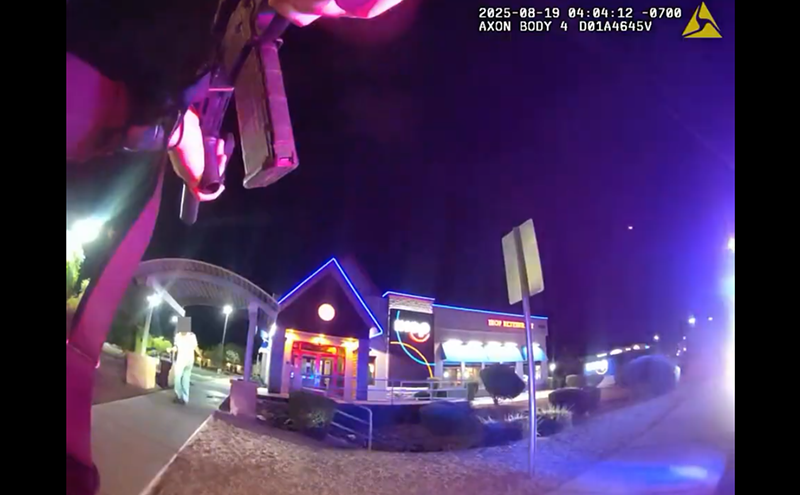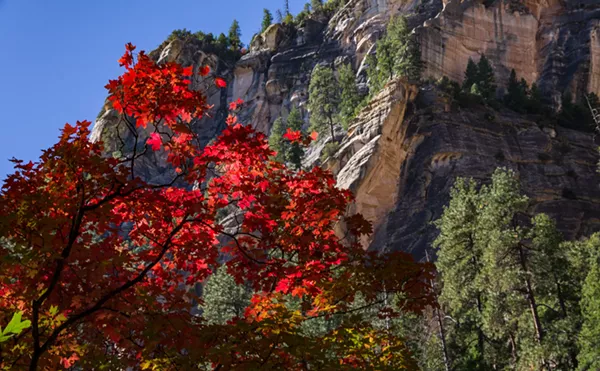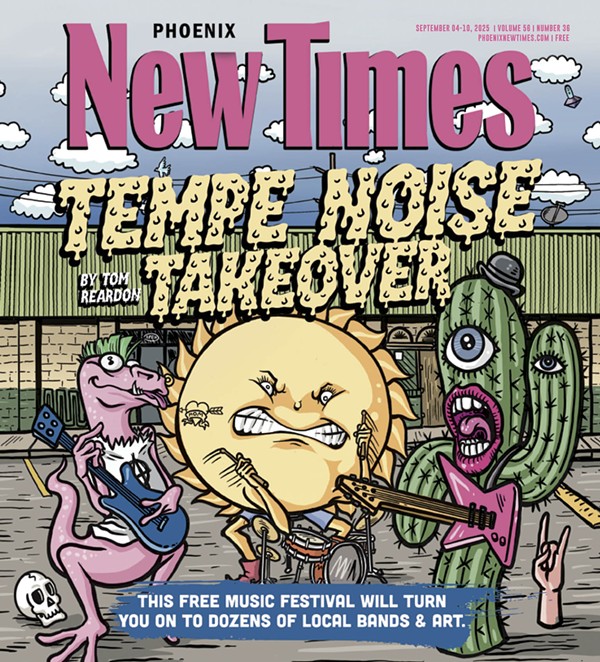Does a marijuana-legalization initiative expected to be on the ballot in November allow cities and towns to ban adults from growing their own marijuana?
Under the initiative, adults 21 and older could grow up to six plants, with a 12-plant-per-household maximum.
Ryan Hurley, a lawyer for the Campaign to Regulate Marijuana Like Alcohol in Arizona, which is pushing the initiative, says cities cannot ban home growing.
But lawyer Tom Dean, who supports the more permissive proposal offered by Arizonans for Mindful Regulation, claims the opposite:
He says it does allow municipalities to stop adults from home cultivation. He and other critics point to the text of the CRMLA initiative to back up their claim.
Adding to the confusion is a video circulated among CRMLA opponents in which Carlos Alfaro, Arizona political director for the initiative, states plainly that cities can implement a ban.
The political implications of the question are unclear. While some AZFMR supporters view the home-grow issue as a potential deal-breaker for them, those supporters are mostly cannabis users who conceivably could benefit in other ways by passage of the CRMLA.
The initiative would make possession of up to an ounce of marijuana and five grams of concentrates legal for adults 21 and older, and sets up a Colorado-style system of retail stores that would sell cannabis products.
However, the hardcore cannabis advocates are passionate in the belief that the CRMLA, backed by state dispensaries and the national Marijuana Policy Project, is too commercial and restrictive. The AZFMR proposal allows 1,600 retail shops instead of about 160 and makes possession of up to eight ounces for sale a misdemeanor. It specifically disallows cities from prohibiting home cultivation.
With marijuana prices still soaring at more than $300 an ounce, a ban on the cheaper, grow-your-own option would be an outrage to these advocates.
Conversely, the ability for cities to implement a ban — if, indeed, the law provides for that eventuality — possibly could be an incentive for a critic of legalization to vote "yes" in November.
Seth Leibsohn, chairman of the opposition group, Arizonans for Responsible Drug Policy, didn't return a message seeking comment.
The notion that a ban on home cultivation is possible stems from a section in the CRMLA initiative called "Localities: Control of marijuana and marijuana products." There, it says cities and towns are allowed to "enact reasonable ordinances or rules that are not in conflict with this act."
Municipalities would be allowed to regulate the opening and closing hours of cannabis retail shops, the proposal says, and also limit the total number of shops. Then it gets interesting: The CRMLA states that municipalities can "restrict the smoking, production, processing, or manufacture of marijuana and marijuana products when it is injurious to the environment or otherwise is a nuisance to a considerable number of persons."
"The city councils will lie and say that marijuana-growing is a nuisance, even when it clearly is not a nuisance, in order to appease the Sheila Polk types and the dispensary owners alike," says Jason Medar, leader of AZFMR.
After Arizona voters approved a medical-marijuana program in 2010, municipalities considered trying to ban home cultivation for patients, he says. Officials may claim home cultivation produces a strong smell, uses fertilizers that aren't always properly disposed of, or that its use of high-powered grow lamps could create a fire risk, Medar says.
Hurley says the idea of a home-grow ban "is a lie being perpetuated by AZFMR."
Yet one campaign representative, Alfaro, also has perpetuated the idea.
"In the law, it says that they have the authority to do that," Alfaro says in a recent video shot by activist Dave Wisniewski of a presentation he made to community members. "If the city does not want . . . the sales or the home cultivation in there, they are able to do that."
Hurley says Alfaro was "confused" and misspoke at the presentation.
The initiative's backers want adults "to have the right to grow in their home regardless," Hurley says.
The concept of a neighborhood "nuisance" is well established in American law, he asserts, and it requires something more substantial than mere belief that home cultivation is always a nuisance no matter how it's done. The law requires the restrictions to be "reasonable," he points out.
Dean, who has made a career of defending marijuana consumers, says police are tipped off to a home-grow in many cases now precisely because neighbors complained to cops about the smell.
"I don't think it smells bad, but I know a lot of people do," Dean says, adding that some anti-marijuana government officials "will exploit this" and attempt a comprehensive ban.
Even if a city ordinance banned home cultivation using the nuisance provision, Dean says, someone who flouts the rule still wouldn't face felony charges as they would now. Instead, a resident caught with an indoor grow room in a city that banned cultivation would receive a cease-and-desist notice. Ignoring that could lead to a local ordinance violation, which in turn could result in a misdemeanor conviction or fine.
Another potential problem lies in the part of the law that says adults who cultivate cannabis on their property can possess and use — on their premises only — all the weed produced by those plants.
However, Dean warns that while CRMLA doesn't place an upper limit on that stored homegrown yield, police and prosecutors might. In other words, a pound of dried marijuana harvested from the plants and stored in a home should be no problem. But if a home cultivator was found by police to have, say, 50 pounds of stored cannabis from the plants, all bets might be off. Police could argue that a gigantic amount of cannabis in someone's home, even if legally grown under CRMLA rules, is "inconsistent with personal use" and potentially could open the grower to a charge of possession with intent to sell, Dean says.
Given the arguments by the two lawyers, similar gripes could be lodged about how smoking would be regulated under the CRMLA proposal. Dean says he believes it would not be reasonable under the initiative for a city to ban all indoor smoking of cannabis under the nuisance provision. But cities could conceivably restrict pot smoking in other ways, like prohibiting smoking it on an apartment balcony.
After legalizing marijuana for adult use in 2012, Denver officials contemplated banning marijuana smoking in private backyards if neighbors could smell it, and in front yards or balconies if someone else could see the activity. The city backed off from that proposal, but according to the Denver Post, smoking on back patios, front porches, or balconies is regulated differently by Colorado cities.
UPDATE: Cities wouldn't be able to ban personal cultivation as outlined in the CRMLA if voters approve the initiative, says the influential League of Arizona Cities and Towns. At New Times' request, Ken Strobeck, executive director of the League, reviewed the initiative to answer the question about home-grow. Strobeck says the League, based on input from its attorney, believes that the same type of small, personal grow operations allowed under the Arizona Medical Marijuana Act would be allowed if the CRMLA becomes law. The Department of Marijuana Licenses and Control set up by the CRMLA would likely create new regulations that are "compatible" with the existing medical-marijuana law, he says.
One primary difference between the adult-use initiative and the medical-cannabis act is that the CRMLA has nothing like the "25-mile rule" that bans home cultivation within 25 miles of an operating dispensary.
Here's Strobeck's full statement from the League:
"The short answer is the type of home grow operations that are allowed now under the medical marijuana initiative will continue to be allowed if the Act passes.
"The Act clearly states that aside from a few provisions, it does not affect any laws relating to medical marijuana, which currently allows home grow operations. See Act, 36-2852(E). Anything currently allowed under state law for medical marijuana (12 plant limitation, subject to restrictions) will still be allowed under this new law. The Act also requires the Department to promulgate rules and this new Department will likely make those regulations compatible with the medical marijuana laws due to the explicit requirement in the Act."












